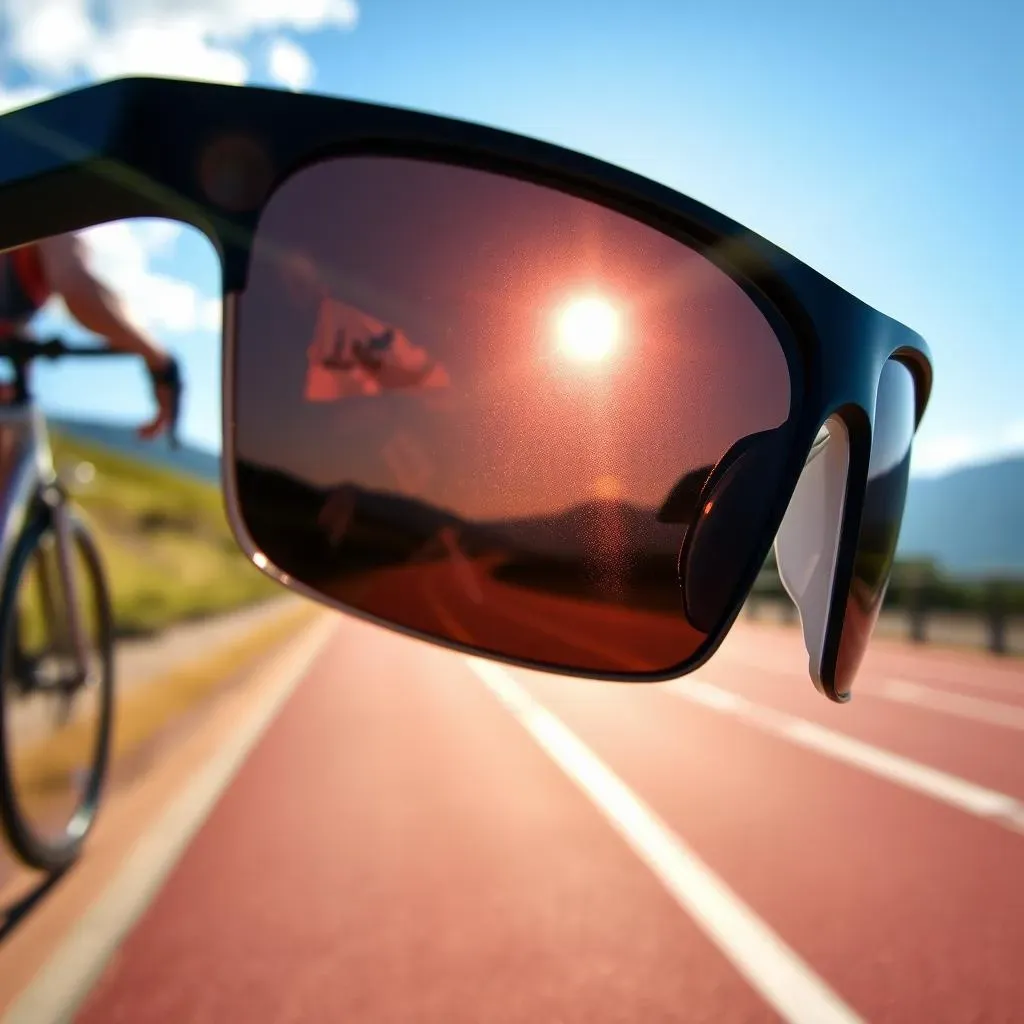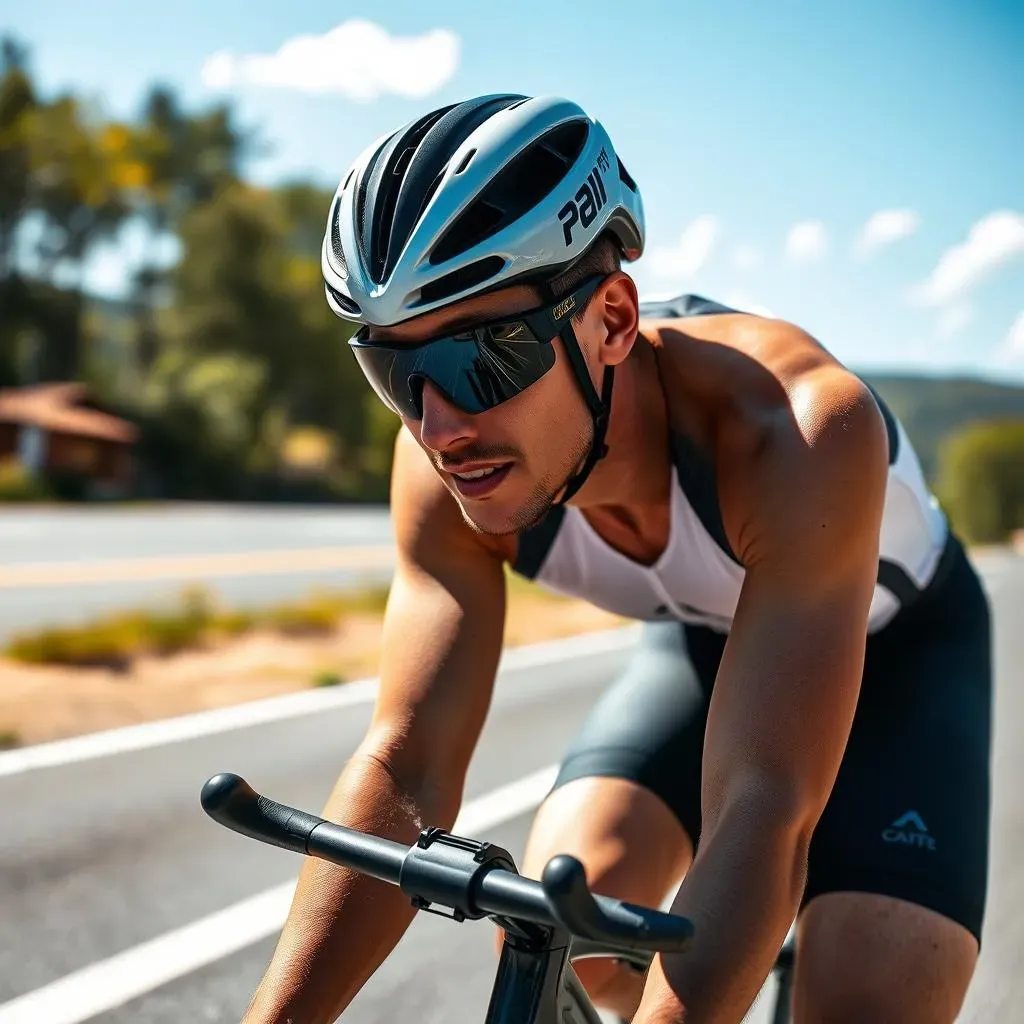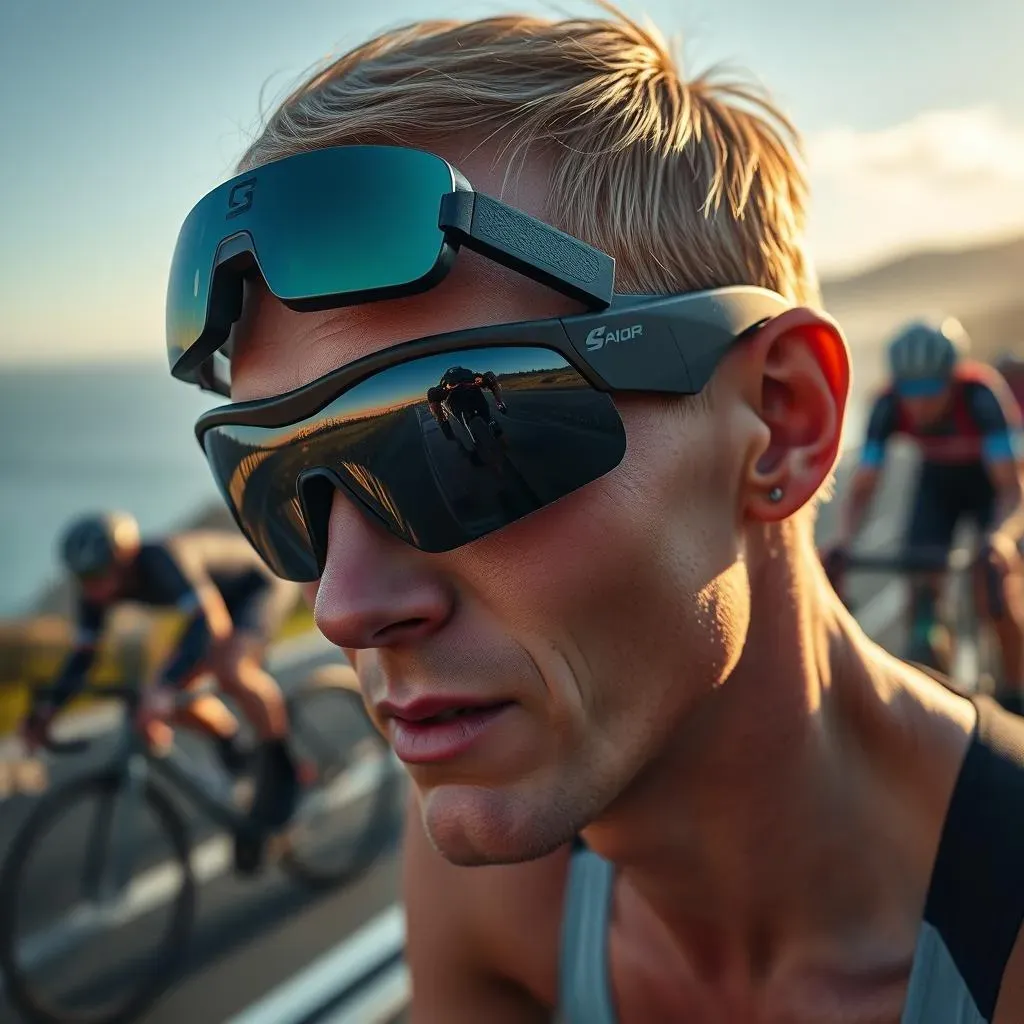Table of Contents
As any triathlete knows, the right gear can make all the difference in performance and comfort during a competition. One often overlooked but crucial piece of equipment is a good pair of sunglasses for triathlon. Not only do they protect your eyes from the sun, wind, and debris, but they can also enhance your vision, reduce squinting, and conserve energy. With so many options available on the market, choosing the best sunglasses for triathlon can be overwhelming. In this article, we will delve into the world of triathlon sunglasses, reviewing top models, discussing key features to consider, and providing expert tips on how to select the perfect pair for your needs. Whether you're a seasoned Ironman competitor or just starting out in the sport, our guide will help you find the best sunglasses for triathlon to improve your performance and take your training to the next level.
Top Sunglasses for Triathlon: Reviews and Comparisons
Top Sunglasses for Triathlon: Reviews and Comparisons
Expert Reviews of Top Models
When it comes to choosing the best sunglasses for triathlon, there are several factors to consider, including lens quality, frame design, and adjustability. We've reviewed some of the top models on the market to help you make an informed decision. The Smith Motiv sunglasses, for example, offer excellent optical clarity and a comfortable fit, making them a great choice for athletes who prioritize performance. On the other hand, the Tifosi Vogel SL sunglasses boast a sleek design and exceptional ventilation, ideal for triathletes who value style and comfort.
The Oakley Sutro sunglasses are another popular option, known for their durable frames and interchangeable lenses. However, some users have reported that they can be a bit heavy, which may be a concern for athletes who prioritize lightweight gear. The Rudy Project Fotonyk sunglasses, meanwhile, feature a unique frame design that provides excellent protection from the elements without obstructing peripheral vision.
Sunglasses Model | Lens Quality | Frame Design |
|---|---|---|
Smith Motiv | Excellent optical clarity | Comfortable fit |
Tifosi Vogel SL | Good optical clarity | Sleek design with excellent ventilation |
Oakley Sutro | Good optical clarity | Durable frames, but can be heavy |
Rudy Project Fotonyk | Excellent optical clarity | Unique frame design with excellent protection |
Comparing Features and Prices
When comparing the different models, it's essential to consider the features that matter most to you. Photochromic lenses, for instance, can adapt to changing light conditions, but may not be suitable for very bright or very dark environments. Interchangeable lenses can be a valuable feature for triathletes who compete in varying conditions. Ventilation is also crucial to prevent fogging and ensure a comfortable fit.
The price of sunglasses for triathlon can vary greatly, ranging from under $100 to over $200, depending on the brand and features. Some models, such as the Sungod Velans and Scicon Sports Aerowing, offer customizable options and high-quality lenses. Our reviewers tested each pair for fit, comfort, performance, and value, providing scores and recommendations to help you make the best choice for your needs.
- Smith Motiv: $120
- Tifosi Vogel SL: $150
- Oakley Sutro: $180
- Rudy Project Fotonyk: $200
Key Features to Consider When Choosing Triathlon Sunglasses
Key Features to Consider When Choosing Triathlon Sunglasses
Lens Quality and Tints
When it comes to lens quality, triathletes need sunglasses that provide excellent optical clarity and protection from UV rays. Look for lenses that block 100% of UVA and UVB rays. Additionally, consider the tint of the lenses. Different tints are suited for different lighting conditions. For example, darker tints are better for bright sunny days, while lighter tints are more suitable for cloudy or low-light conditions.
Some sunglasses also offer photochromic lenses, which adapt to changing light conditions. However, these lenses may not be suitable for very bright or very dark environments. Interchangeable lenses can be a valuable feature, allowing you to switch between different tints depending on the conditions.
Lens Tint | Light Conditions | Recommended Activities |
|---|---|---|
Dark Tints (e.g., gray, brown) | Bright sunny days | Running, cycling |
Light Tints (e.g., yellow, amber) | Cloudy or low-light conditions | Early morning or evening training |
Photochromic | Changing light conditions | Triathlons with varying light conditions |
Frame Design and Adjustability
A good frame design should provide a secure and comfortable fit. Look for sunglasses with adjustable nose pieces and temples to ensure a customized fit. Ventilation is also crucial to prevent fogging and ensure clear vision. Some frames feature openings or mesh panels to improve airflow.
Consider the weight of the sunglasses as well. Lightweight frames can reduce fatigue and improve comfort during long training sessions or competitions. However, some frames may be too flexible, which can compromise their durability.
- Adjustable nose pieces for a secure fit
- Ventilated frames to prevent fogging
- Lightweight materials for comfort
- Durable construction for longevity
Additional Features to Consider
Other features to consider when choosing sunglasses for triathlon include polarization, anti-reflective coatings, and prescription lens options. Polarized lenses can reduce glare from water or roads, while anti-reflective coatings can minimize distractions. If you have prescription needs, look for sunglasses that offer interchangeable lenses or can be fitted with prescription lenses.
Some sunglasses also come with additional accessories, such as carrying cases or cleaning cloths. While these may not be essential, they can be useful for maintaining your sunglasses and extending their lifespan.
Feature | Benefits | Recommended For |
|---|---|---|
Polarized lenses | Reduces glare | Cycling, water sports |
Anti-reflective coatings | Minimizes distractions | Running, high-intensity activities |
Prescription lens options | Customizable vision correction | Triathletes with prescription needs |
Sunglasses for Triathlon: Lens Quality, Frame Design, and Adjustability
Sunglasses for Triathlon: Lens Quality, Frame Design, and Adjustability
Understanding Lens Quality
When it comes to lens quality, triathletes need sunglasses that provide excellent optical clarity and protection from UV rays. The lenses should block 100% of UVA and UVB rays to prevent eye damage. Additionally, the tint of the lenses is crucial, as different tints are suited for different lighting conditions. For example, darker tints such as gray or brown are ideal for bright sunny days, while lighter tints like yellow or amber are better for cloudy or low-light conditions.
Some sunglasses also feature photochromic lenses, which adapt to changing light conditions. However, these lenses may not be suitable for very bright or very dark environments. Interchangeable lenses can be a valuable feature, allowing triathletes to switch between different tints depending on the conditions. For instance, during the cycling leg of a triathlon, a darker tint may be preferred to reduce glare from the road, while a lighter tint may be better suited for the running leg in low-light conditions.
Lens Tint | Light Conditions | Recommended Activities |
|---|---|---|
Dark Tints (Gray, Brown) | Bright Sunny Days | Cycling, Running |
Light Tints (Yellow, Amber) | Cloudy or Low-Light Conditions | Early Morning or Evening Training |
Photochromic | Changing Light Conditions | Triathlons with Varying Light Conditions |
Frame Design and Adjustability
A good frame design is essential for triathlon sunglasses, providing a secure and comfortable fit. Look for sunglasses with adjustable nose pieces and temples to ensure a customized fit. Ventilation is also crucial to prevent fogging and ensure clear vision. Some frames feature openings or mesh panels to improve airflow, which can be especially useful during high-intensity activities like cycling.
Consider the weight of the sunglasses as well. Lightweight frames can reduce fatigue and improve comfort during long training sessions or competitions. However, some frames may be too flexible, which can compromise their durability. When choosing sunglasses, balance comfort with durability to ensure they can withstand the demands of triathlon training.
- Adjustable nose pieces for a secure fit
- Ventilated frames to prevent fogging
- Lightweight materials for comfort
- Durable construction for longevity
How to Select the Best Sunglasses for Triathlon Based on Your Needs
How to Select the Best Sunglasses for Triathlon Based on Your Needs
Understanding Your Needs
When selecting the best sunglasses for triathlon, it's essential to consider your specific needs and preferences. Different triathletes have different requirements based on their training environment, competition conditions, and personal comfort. For instance, if you train primarily in bright and sunny conditions, you may prioritize sunglasses with darker tints to reduce glare. On the other hand, if you often train in low-light conditions, lighter tints may be more suitable.
Consider the type of activities you'll be doing most. For cycling, polarization can be beneficial to reduce glare from the road. For running, ventilation and anti-fogging features are crucial to maintain clear vision. When swimming, although sunglasses are not typically worn, consider the transition periods where sunglasses can be worn to protect your eyes from the sun.
Activity | Key Features to Consider | Recommended Sunglasses |
|---|---|---|
Cycling | Polarization, ventilation | Smith Motiv, Oakley Sutro |
Running | Ventilation, anti-fogging | Tifosi Vogel SL, Rudy Project Fotonyk |
Transition | Lightweight, quick-drying | Sungod Velans, Scicon Sports Aerowing |
Considering Budget and Brand
The price of sunglasses for triathlon can range from under $100 to over $200, depending on the brand and features. It's essential to set a budget and balance it with the features you need. Some brands, like Oakley and Rudy Project, offer high-quality sunglasses with advanced features but at a higher price point. Other brands, such as Tifosi and Smith, provide excellent value for money with their mid-range options.
Consider the warranty and customer support offered by the brand. Some brands provide a lifetime warranty, while others may offer a shorter warranty period. Additionally, think about the availability of replacement parts, such as lenses and nose pieces, in case you need to make repairs or adjustments.
- Set a budget and prioritize features accordingly
- Research brands and their warranty offerings
- Check availability of replacement parts
Trying Before Buying
If possible, try before you buy. Many sunglass manufacturers offer demo days or have retail partners where you can try on different models. This is especially important for triathletes who have specific fit requirements or preferences. Pay attention to how the sunglasses feel during different activities, such as running or cycling. If trying before buying isn't an option, read reviews and talk to fellow triathletes who have experience with the sunglasses you're considering.
Once you've narrowed down your options, consider the overall value proposition. Look for sunglasses that meet your needs, fit your budget, and provide the features you require. Remember, the best sunglasses for triathlon are those that enhance your performance, provide comfort, and offer durability for long-term use.
Brand | Model | Price Range |
|---|---|---|
Smith | Motiv | $120-$150 |
Tifosi | Vogel SL | $150-$180 |
Oakley | Sutro | $180-$200 |
Conclusion: Finding the Perfect Fit for Your Triathlon Needs
In conclusion, the best sunglasses for triathlon are those that combine protection, comfort, and performance. By considering factors such as lens quality, frame design, adjustability, and ventilation, you can find the perfect pair to enhance your training and competition experience. Whether you prioritize lightweight frames, photochromic lenses, or stylish designs, there's a pair of sunglasses out there for every triathlete. Remember, investing in a good pair of sunglasses is not just about looking cool – it's about performing at your best and enjoying the ride. So, take the time to explore the options, read reviews, and try out different models to find the sunglasses that will become your trusted companion on every triathlon journey.
